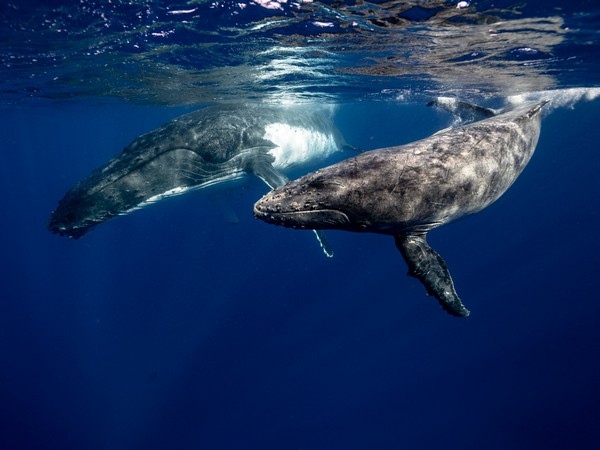Science News Roundup: Scientists discover the anatomy behind the songs of baleen whales; India eases approval process for foreign direct investment in space sector and more
The six-legged robot lander, dubbed Odysseus, was due to begin the final descent from lunar orbit with a blast of its main engine about an hour before landing, with touchdown planned for 5:30 p.m. EST (2230 GMT) on Thursday at a crater named Malapert A near the moon's south pole. India eases approval process for foreign direct investment in space sector India will allow 100% foreign direct investment in the manufacture of satellite systems without official approval and eased the rules for launch vehicles, a government statement said, aiming for a greater share of the global space market.

Following is a summary of current science news briefs.
US nears attempt at first moon landing in half century with private robot spacecraft
A spacecraft built and flown by Houston-based company Intuitive Machines sailed around the moon on Thursday headed for an attempt at the first U.S. touchdown on the lunar surface in more than half a century and the first ever entirely by the private sector. The six-legged robot lander, dubbed Odysseus, was due to begin the final descent from lunar orbit with a blast of its main engine about an hour before landing, with touchdown planned for 5:30 p.m. EST (2230 GMT) on Thursday at a crater named Malapert A near the moon's south pole.
India eases approval process for foreign direct investment in space sector
India will allow 100% foreign direct investment in the manufacture of satellite systems without official approval and eased the rules for launch vehicles, a government statement said, aiming for a greater share of the global space market. India's space ambitions got a boost when it became the first country to land a spacecraft near the unexplored south pole of the moon in August - and the fourth to achieve a soft landing - just days after a similar Russian mission failed.
Scientists discover the anatomy behind the songs of baleen whales
It is one of Earth's most haunting sounds - the "singing" of baleen whales like the humpback, heard over vast distances in the watery realm. Now scientists have finally figured out how these filter-feeding marine mammals do it. Baleen whales - a group that includes the blue whale, the largest animal in Earth's history - use a larynx, or voice box, anatomically modified to enable underwater vocalization, researchers said on Wednesday. They have evolved a novel structure - a cushion consisting of fat and muscle that sits inside the larynx, the researchers said.
Neuralink's first human patient able to control mouse through thinking, Musk says
The first human patient implanted with a brain-chip from Neuralink appears to have fully recovered and is able to control a computer mouse using their thoughts, the startup's founder Elon Musk said late on Monday. "Progress is good, and the patient seems to have made a full recovery, with no ill effects that we are aware of. Patient is able to move a mouse around the screen by just thinking," Musk said in a Spaces event on social media platform X.
Hong Kong scientists seek good fortune for endangered horseshoe crabs
Hong Kong conservationists on Wednesday began underwater tracking of endangered horseshoe crabs, which date back to before the dinosaurs, in a bid to help them survive the perils of modern life. The spine-tailed sea creatures named for the shape of their body shells face numerous threats, including the loss of nursery beaches for baby crabs, entanglement in fishing nets and human exploitation for food.
Private US moon lander reaches lunar orbit ahead of touchdown attempt
A moon lander built by Houston-based company Intuitive Machines reached lunar orbit on Wednesday, heading for an attempt at the first U.S. touchdown on Earth's nearest celestial neighbor in more than 50 years, and the first ever by a private spacecraft. The six-legged robot lander, dubbed Odysseus, entered a circular orbit 57 miles (92 km) above the lunar surface after firing its main rocket thruster for nearly seven minutes in an orbital insertion maneuver, the company said in an online statement.
ALSO READ
Australian-Russian Couple Arrested on Espionage Charges Amid Rising Security Concerns
Australia Arrests Russian-Born Couple on Espionage Charges
Russian Rouble Faces Minor Decline Amidst Sanctions and Low Trading Volumes
4.1 Magnitude Earthquake Hits Jammu and Kashmir's Baramulla
Ukrainian Air Force Thwarts Russian Missile and Drone Attack










